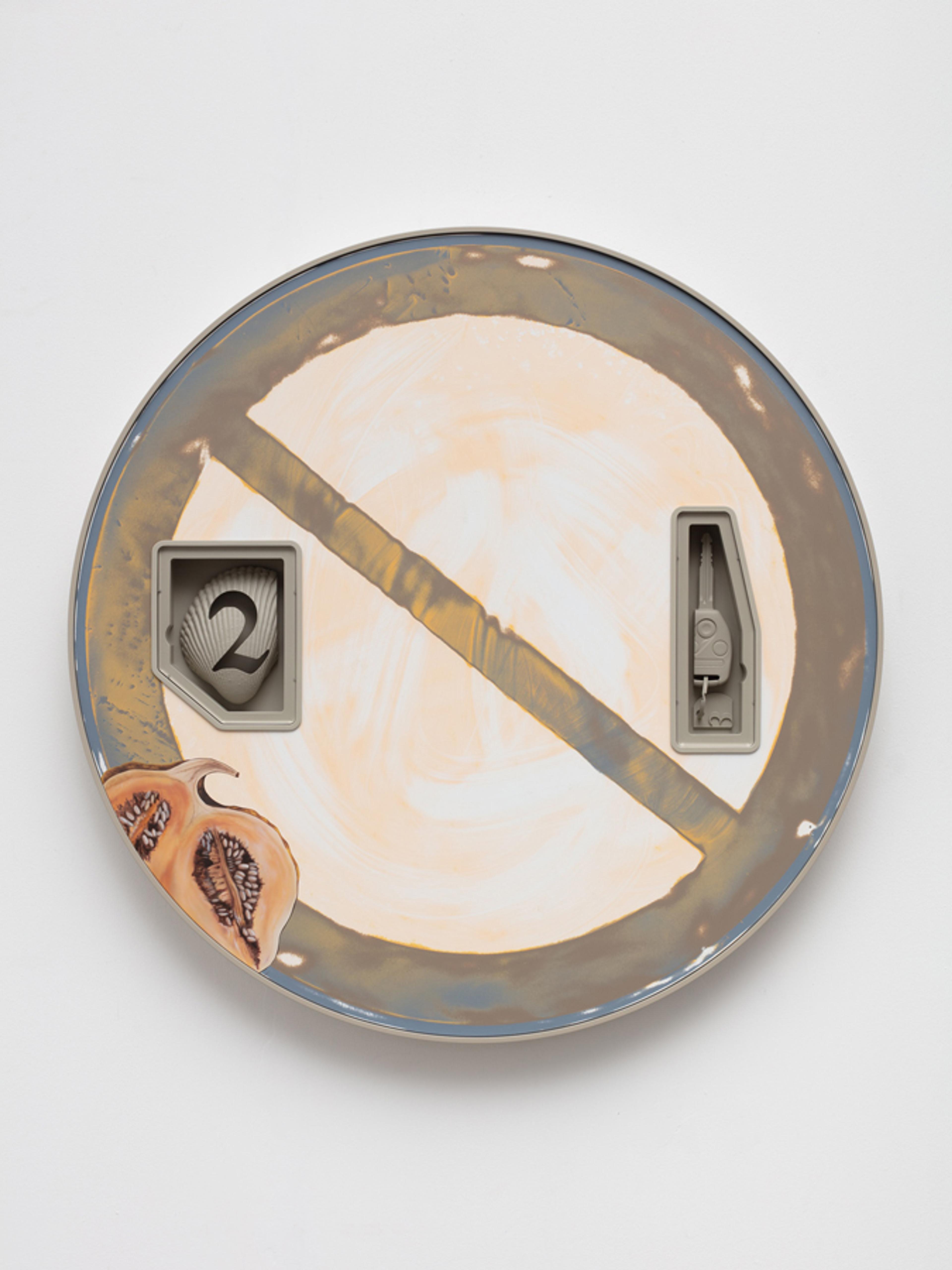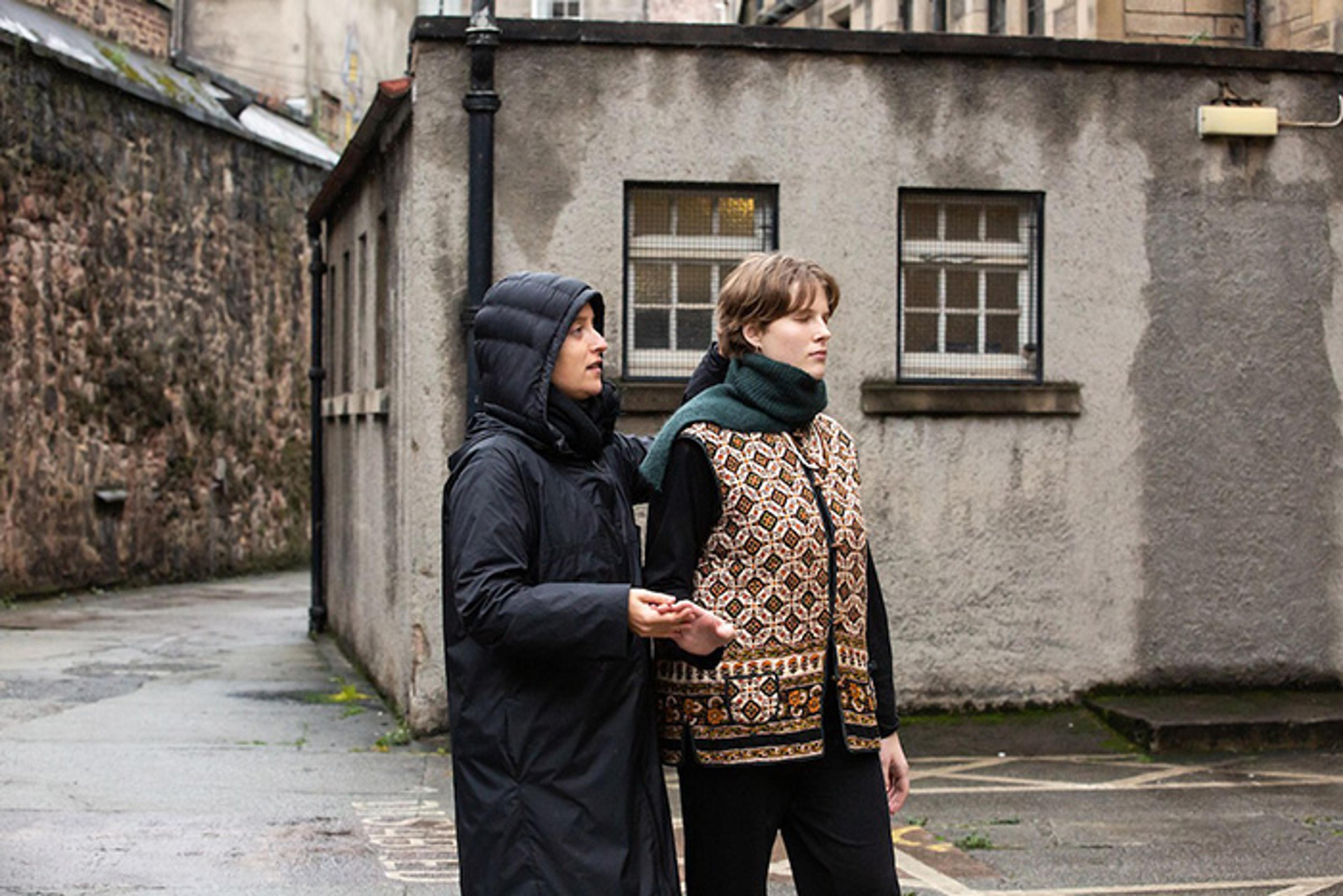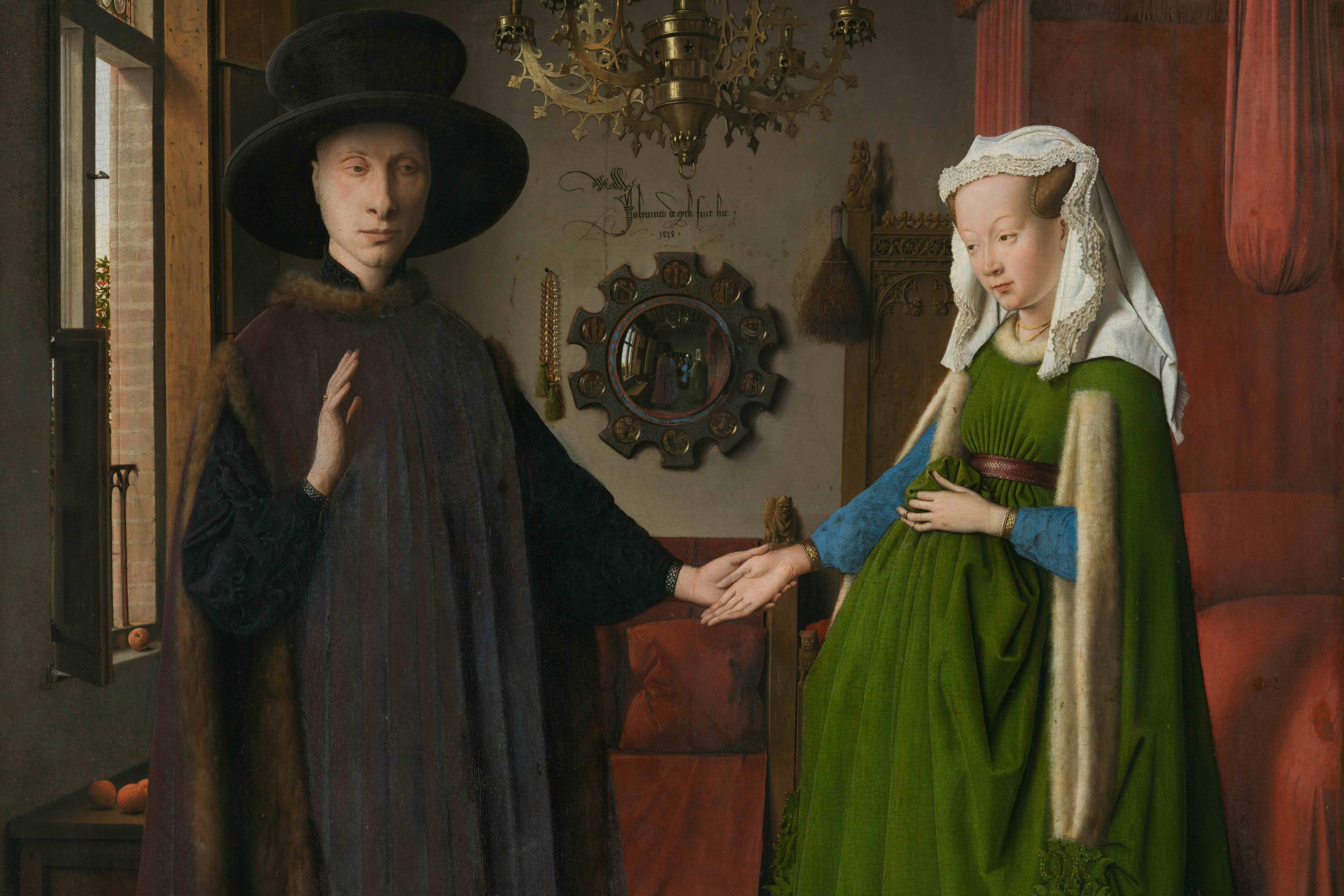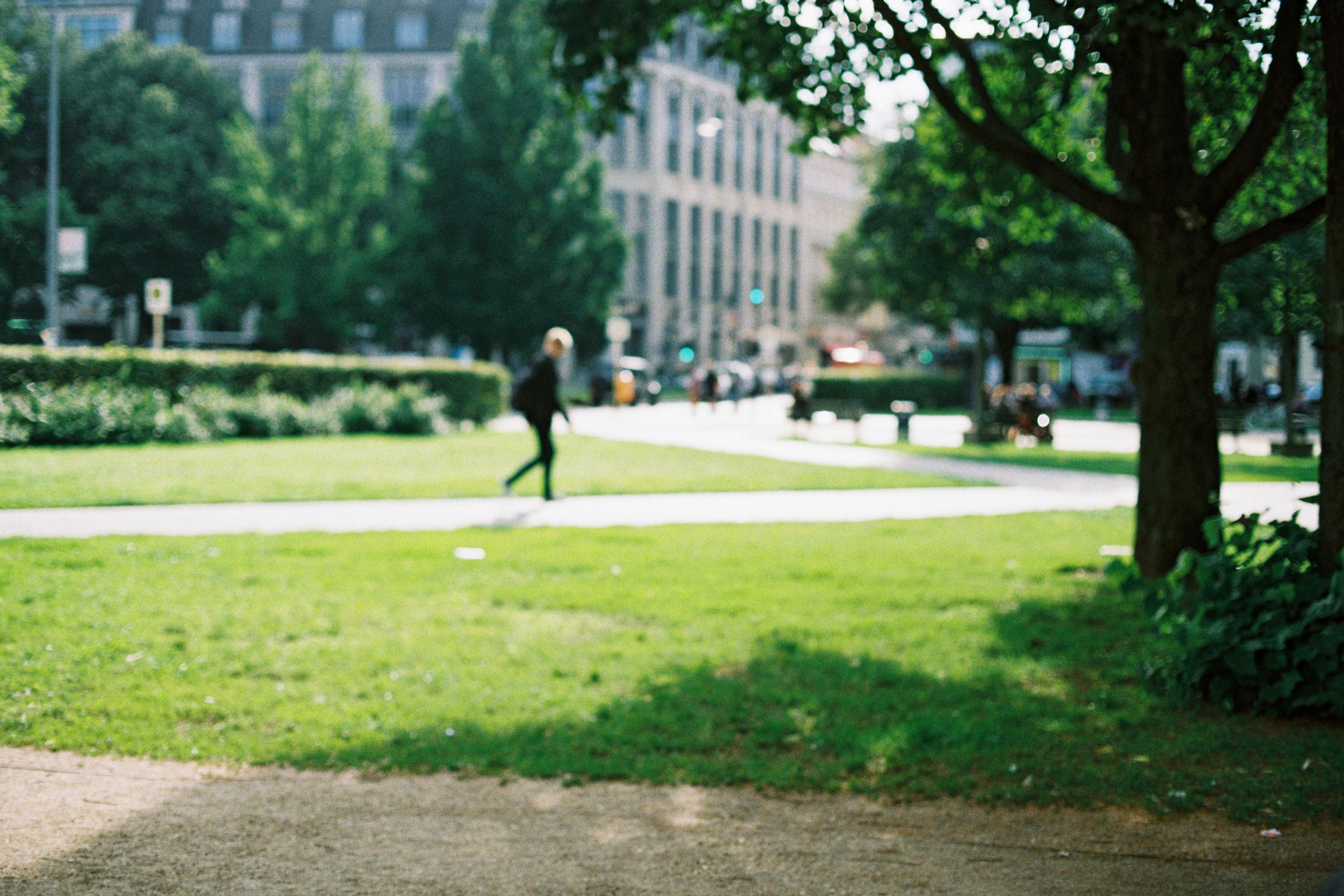‘Where does the mind stop and the rest of the world begin?’ In 1998, that question led two philosophers to develop a thought experiment that changed how we think about the mind. In their experiment, Andy Clark and David Chalmers describe Inga, a woman living in New York, who one day ‘hears from a friend that there is an exhibition at the Museum of Modern Art’. This isn’t a problem – she knows how to get there because she’s been many times before. Otto also wants to visit the museum, but suffers from a brain-based disorder that affects his memory. To get there, Otto needs to check directions he’s written in his notebook – the information he needs exists outside his brain.
Just as Inga’s beliefs and consequent behaviour are guided by what’s stored in her biological memory, Otto’s are guided by what’s written in his notebook. For Clark and Chalmers, this is an example of what they called the ‘extended mind’ in which the world plays an ‘active role’ in cognitive processes. They argued that our beliefs are not only inside our heads but constituted through resources outside the brain (such as Otto’s notebook). Their thought experiment ended at the entrance to the Museum of Modern Art, but what can we discover by venturing into museums and galleries to consider the role that art plays in the extension of our minds?
Let’s start on relatively familiar territory: the way we interact with painted portraits, one of the most traditional art forms. Conventionally, we might think in terms like this: I am looking at a painting of a person. That is, one entity (a person) is viewing a separate entity (a representation of a person). Yet, viewing a portrait, such as Leonardo da Vinci’s Mona Lisa (1503-17), I experience the mental distance between myself and the artwork shift. There’s a flickering between feeling gazed at by someone with a warmly enigmatic expression, and my memories of what it feels like to make such an expression, with that bright stream of concentration from the eyes and the pleasurable tensing of lips, curving a mouth corner into the start of a smile.
Where does my mind stop and the Mona Lisa begin? The painting offers the materialisation of an experience that shares connections with and distinctions from my own lived experiences. Viewing an artwork such as the Mona Lisa, where the complexities of real-life social interactions are not required, I am free to immerse myself in the sensations aroused and to reflect on them. Being caught up in this aesthetic experience draws on and simultaneously overlays my memories, as well as recalibrating my future experiences, and imaginings of similar gazes. There is something distinct and particularly valuable about this kind of encounter.
Clark and Chalmers argued that, for something to become part of the ‘extended mind’, it should play a role equivalent to neural processes. In their thought experiment, Otto’s notebook functions similarly to Inga’s biological memory when it comes to finding the Museum of Modern Art. Yet such resources needn’t work in an identical way to brain-based ones. Even Otto’s notebook doesn’t store information in the same way as the brain and, sometimes for that very reason, can usefully supplement it. So how is all this related to the ways our minds are extended by works of art?
Artworks diversify and enrich our cognitive capacities by acting as catalytic scaffolding for perceptual flights into and beyond the usual constraints of our own imaginations. Through art, we can extend our minds to points in time and space that otherwise remain invisible or ungraspable. Artworks both reflect and inspire transformative understandings of our own minds and our encounters with the world, widening and deepening the ways we make sense of our subjective experiences. Each style, artist and work of art provides distinct forms of cognitive mediation, distinct thought pathways, which expand our cognitive range and add to the array of virtual coordinates through which we orient ourselves. The Mona Lisa is one example, but there are many other forms and styles of art that can make us aware of the extended ways our minds work.
The Dutch artist Magali Reus is a sculptor. She reconfigures everyday materials – such as aluminium foil, PVC, plastic clips, nuts and bolts – and assembles them into sculptures that echo the form of familiar objects, such as fire hydrants. Through this process, she renders objects as symbolic gestures rather than functional things. Such artworks defamiliarise objects lurking in our environment: they reveal the densely layered cognitive pathways (formed over our evolutionary and developmental histories) that either make automatic or ignite our experiences of the world by giving them salience.

Settings (Twice Pacific) (2019) by Magali Reus, featuring powder-coated and airbrushed steel, aluminium, sprayed UV-printed resin, acrylic and grub screws. © Magali Reus
Otto’s notebook supplements his biological processes by standing in for brain-based memories that would have guided his beliefs and behaviour in similar ways. And yet, by storing everyday factual information, his notebook merely generates predictable outcomes. In contrast, our encounters with the unfamiliar, defamiliar or unexpected in art can generate increasingly complex and nuanced thoughts. Research shows that when we think about the future, there is not just one stream of anticipatory neural activity. Instead, an array of outcomes are anticipated and, as a consequence of what actually occurs, there is a subsequent recalibration of these anticipatory mechanisms.
What does this mean in relation to our understanding of art? Artworks take advantage of and reinforce this feature of the mind. The stagnant mind descends ever and again down entrenched slopes, hardening through the reiteration of familiar tropes and habitually repeated beliefs and behaviours. Art that engages the unfamiliar and its ilk can lead to a revision of our expected prior predictions about the world and ourselves. By requiring free conceptual play across a wider range of possibilities, works of art can open up how our minds imagine or how they conceive of the future and the past. This may help explain why humans seek out heightened psychological experiences of all kinds, even negative ones, through the medium of the arts. The arts are not trivial: artworks help our imaginations mediate the particularities of our minds (and the particular bodies and contexts they’re predicated on) without the risks of real-life experiences.
Myriam Lefkowitz is a performance artist and dancer who lives in Paris. She is interested in the ways we imaginatively speculate through our bodies. In her performance Walk, Hands, Eyes (a city) – an example of artwork that lives outside the domains of galleries or museums – participants with closed eyes are silently guided around a city one at a time by a trained performer. Walk, Hands, Eyes (a city) shows how our minds perpetually expand and contract, drawing on an array of everchanging sense-making resources. Other senses become amplified when vision is offline, which shows how the mind dynamically seeks out the most reliable (and available) sensory sources by giving them higher weighting.
I remember the surrounding sounds and smells seemed amplified as I walked with eyes closed: the rhythm of footfalls on pavements, seemingly disembodied voices floating past, and the pungent, sweetly bitter depth of coffee aroma. Then the ‘whoosh’ of traffic is replaced by a ‘swish’ of breeze, a sudden sense of warm sunlight on my skin, the delicately sweet scent of grass and the emotionally uplifting song of a bird rising above the background thrum. How fluidly the mind and self merges with the world while caught up in sense-making.

From Walk, Hands, Eyes. © Myriam Lefkowitz
During Walk, Hands, Eyes, my consciousness first moved from an everyday, forward-looking perspective into an awareness of the world as radiating out around me; next, into an awareness of my feet against rebounding pavement or spongy grass; and finally, into points of interface with the guide where, for example, our hands joined – though these points often appeared to dissolve, creating a seamless coupling and an emergent sense of sharing across selves. Such artworks enable us to reflect both on the nature of our capacities and on the world around us.
When we imaginatively engage with an artwork, it plays out across our memories. Autobiographical memories are the basis of what is remembered about the past, but also what we draw on to think about the future. They also enable us to imagine things, either in our own mind or in concert with other minds. Memories are recalibrated every time we replay them, which can make them less, or more, reliable, as well as widening or refining their associative range.

Still from The Trip (2011), by Marcus Coates. Courtesy the artist
Marcus Coates, a contemporary artist living in London, makes films that allow us to reflect on a range of cognitive modes and levels. He explores the value of the unconscious in reasoning, the insights offered by shamanistic rituals, and illuminates relations between human and animal environments. His short film The Trip (2011) is a little different. When presented in art galleries, it is projected onto a blank wall, revealing a dimly lit room in St John’s Hospice in London. The room frames a window through which we see an ordinary road journeyed by anonymous figures. We hear only the voices of Coates and a terminally ill man named Alex who says he wants to ask questions of an Indigenous group living in the Amazon rainforest. As Alex can’t travel, Coates offers to go on his behalf. Sitting quietly in the dark, the viewer of this work becomes aware that they’re seeing from the point of view of Alex and Coates, who remain out of frame – viewers occupy roughly the same positions as the two unseen speakers. Later, when Coates returns from his trip, the view remains the same, and though the light has subtly changed, the colours remain subdued. Yet Coates’s sense-evoking storytelling transports us to the vibrancy of the Amazon – humid, teeming, green – such that the road on the screen seems to quiver on the verge of becoming the great river itself.
When we are reading a book or listening to a story, especially one with unusual, rich and vivid language, we flesh out the words by drawing on our own experiences, expanding our networks of associations and widening conceptual horizons. Just as each viewer of a work of art (like each reader of a book) brings that work to life, an artwork brings each viewer newly forth. This is a reciprocal relationship. Coates gives Alex the vicarious experience of an unknown place and a people, and in turn Coates’s journey is shaped by acting on Alex’s behalf. As viewers, we also participate. Such phenomenological sharing across persons, though necessarily constrained, poignantly illuminates our capacity to constitute each other’s minds through storytelling; it is an experience that the audience – and now you the reader – share. Leaving the gallery, our transformed ways of looking at the mundane world become folded into the work of art, too, and the artwork extends outward through our minds.
Otto’s notebook and its capacity to guide his beliefs and behaviour by supplementing his ability to access information only begins the story of our extended minds. The arts enable critical and creative thinking beyond the constraints of reason, unaided imaginations, or conventions and norms in which we can become blindly immersed. This holds true whether we are thinking about artworks aiming at realist representations (like the Mona Lisa) or the other forms of art that feature in and outside of contemporary galleries. Thoughts captured in an artwork enable new trajectories and associational networks, and vary with each reacquaintance. Our minds are shape-shifting configurations that expand and contract in relation to an array of internal and external factors. Thinking occurs through the physical, social and virtual worlds that we constitute and that in turn constitute us, with artworks offering especially revelatory forms of cognitive coupling.








